June 12 was a long day of travel, as we flew from Mekele to Addis Ababa, with a layover just long enough to enjoy a quick Kaldi Coffee (the Ethiopian version of Starbucks) before we flew on to Arba Minch, south of Hawassa. Then we had a five-hour drive to Jinka, in the heart of the Southern Omo Valley and just about 120 miles from the Ethiopia/Kenya border.
The Omo Valley is home to 17 ethnic tribes that have been able to maintain their traditional lifestyles. The largest is the Ari tribe, with more than 300,000 members, and the smallest is the Kara tribe, with only about 1,400 members. The tribes can be distinguished by their dress, facial markings, and hair style. They are largely pastoral, but a few are becoming more settled and practice farming.
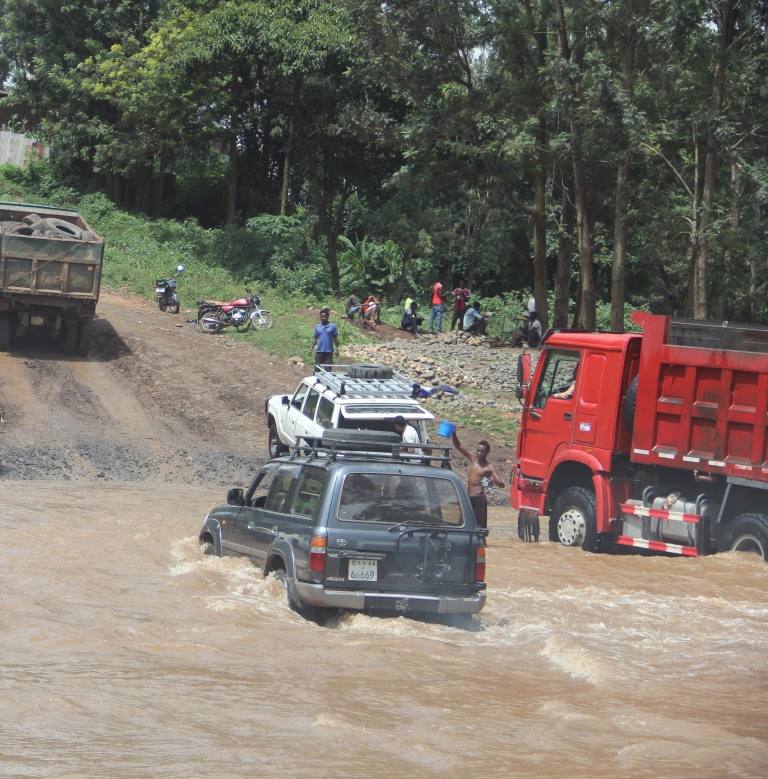
On June 13, we headed out to visit the Mursi tribe. Overnight, we had a torrential downpour that lasted about two or three hours. Electricity was lost a little after midnight. As you can see above, because of the heavy rains, many of creeks and rivers were swollen above low-water crossings, creating a couple of interesting and challenging crossings for us.
The Mursi tribe number about 7,400, with 12 different clans. They are pastoralist, with cattle as their most prized possessions and their measure of wealth. Marriage is marked with the exchange of cattle … the dowry for the bride is usually 30 to 40 head of cattle, given by the groom’s family to the father of the bride.
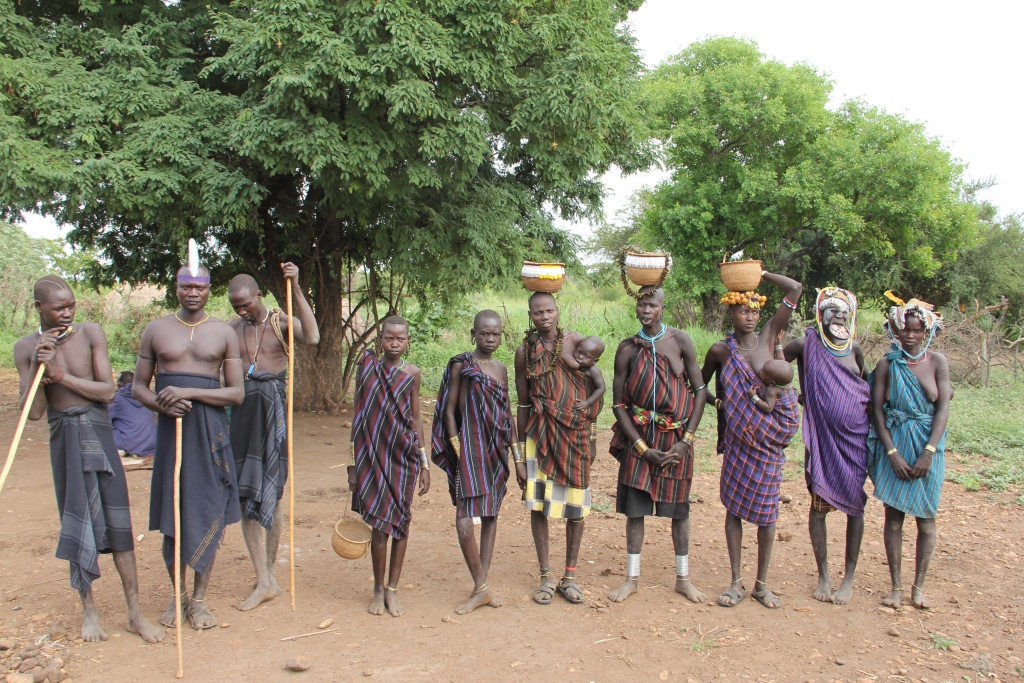
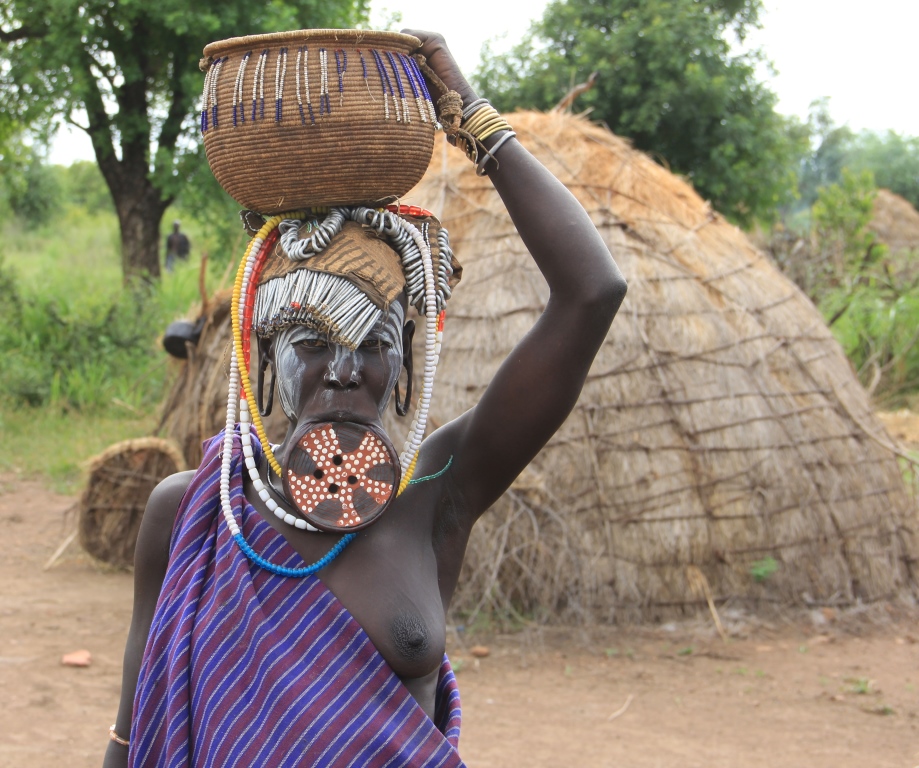
The Mursi women are famed for wearing large, clay plates, inserted in their lips and ear lobes, like the one shown above. This process usually is begun when a girl is around the age 11 or 12, starting with a slit in the lower lip whose size is gradually increased over time.
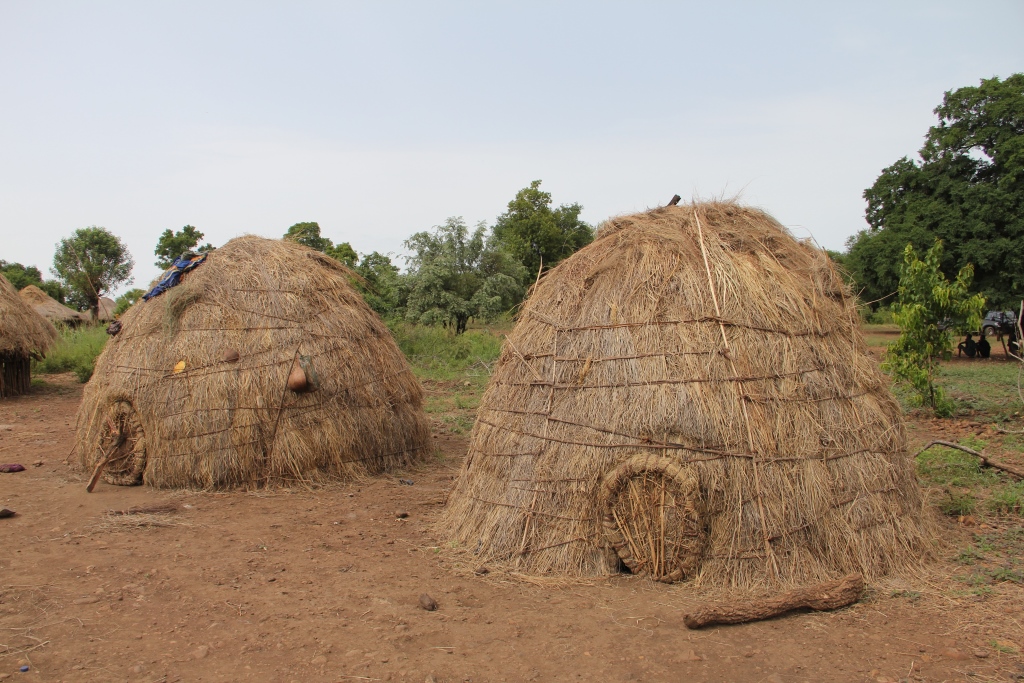
Moving about often, they live in simple one room huts, the one shown above. It is mainly used for sleeping, with cooking, chores, and eating all done outside.
After visiting with the Mursi tribe members, we drove to Weyto. Since it was Saturday, it was their market day. This market day is frequented by Hamar, Tsemay, and Arbore tribes.
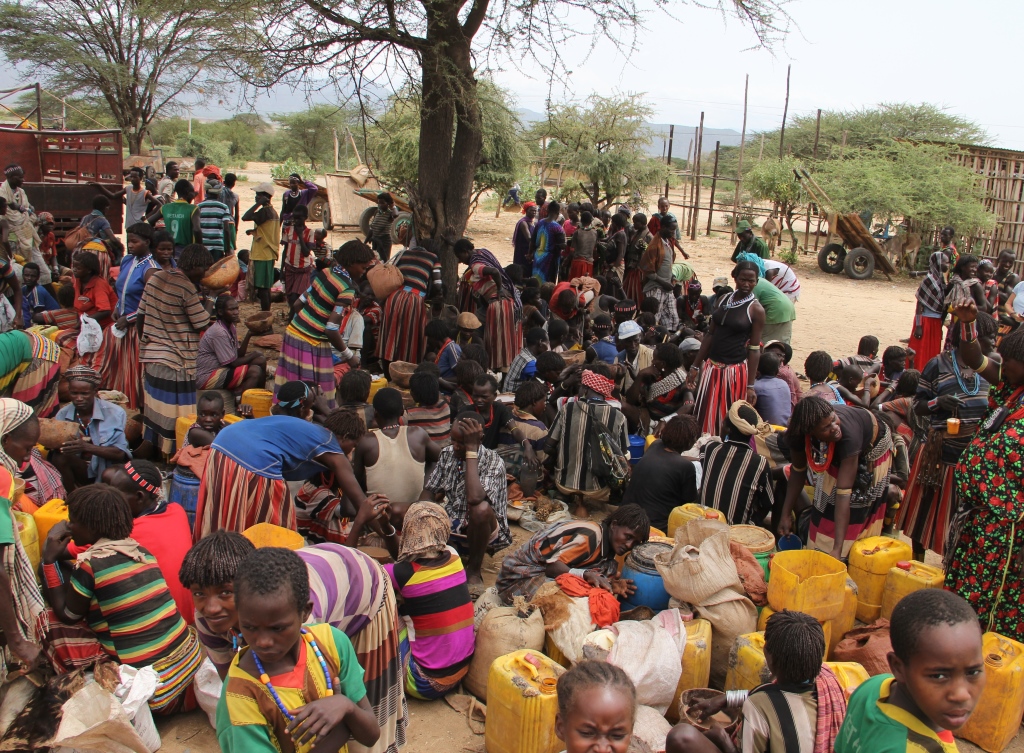
The market is quite a social gathering, with large groups of tribe members gathered under different trees, drinking the local homemade beer. All kinds of subjects are discussed, including politics, marriages, funerals, community priorities, family business, and of course the weather.
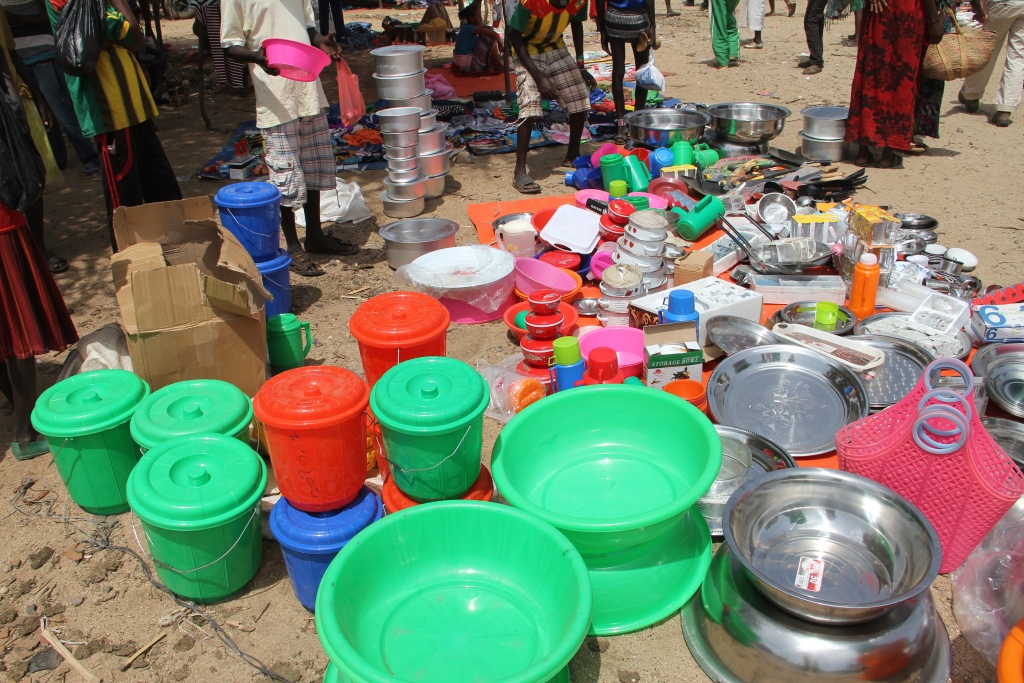
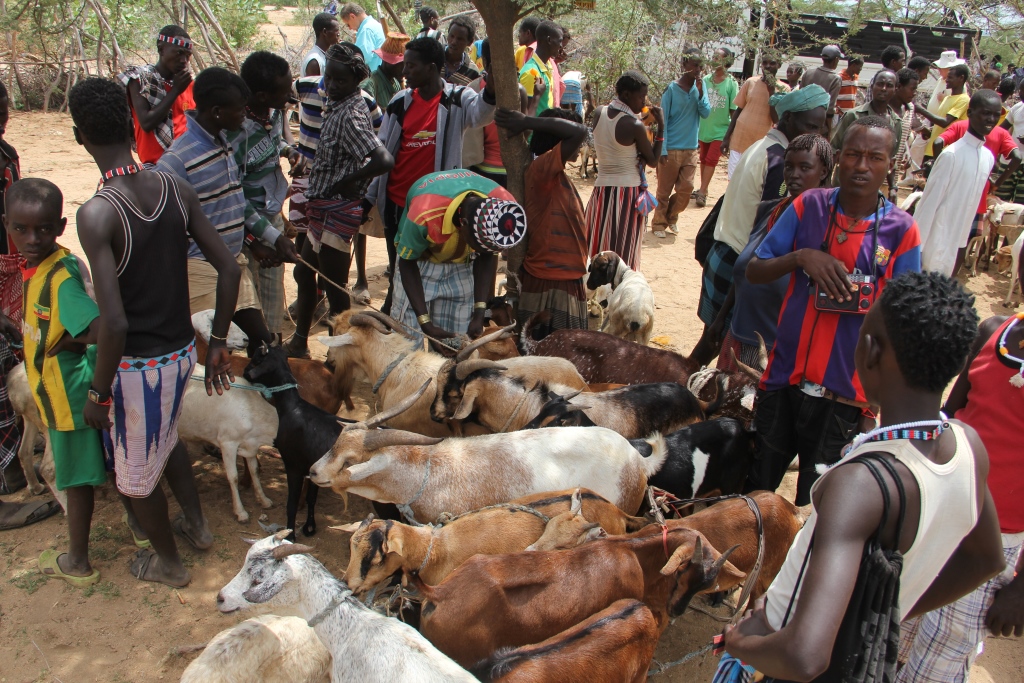
Everything needed for daily life can be found at the market, sold or bartered … livestock, chickens, produce, grain, all types of clothes and shoes, housewares, etc. There is complete separate section for just the livestock and, of course…

…it’s a great place to meet new friends!
After the overload of our senses from the market, we headed back to Arba Minch for our overnight stay at the Paradise Lodge.
June 12 was a long day of travel, as we flew from Mekele to Addis Ababa, with a layover just long enough to enjoy a quick Kaldi Coffee (the Ethiopian version of Starbucks) before we flew on to Arba Minch, south of Hawassa. Then we had a five-hour drive to Jinka, in the heart of the Southern Omo Valley and just about 120 miles from the Ethiopia/Kenya border.
The Omo Valley is home to 17 ethnic tribes that have been able to maintain their traditional lifestyles. The largest is the Ari tribe, with more than 300,000 members, and the smallest is the Kara tribe, with only about 1,400 members. The tribes can be distinguished by their dress, facial markings, and hair style. They are largely pastoral, but a few are becoming more settled and practice farming.

On June 13, we headed out to visit the Mursi tribe. Overnight, we had a torrential downpour that lasted about two or three hours. Electricity was lost a little after midnight. As you can see above, because of the heavy rains, many of creeks and rivers were swollen above low-water crossings, creating a couple of interesting and challenging crossings for us.
The Mursi tribe number about 7,400, with 12 different clans. They are pastoralist, with cattle as their most prized possessions and their measure of wealth. Marriage is marked with the exchange of cattle … the dowry for the bride is usually 30 to 40 head of cattle, given by the groom’s family to the father of the bride.


The Mursi women are famed for wearing large, clay plates, inserted in their lips and ear lobes, like the one shown above. This process usually is begun when a girl is around the age 11 or 12, starting with a slit in the lower lip whose size is gradually increased over time.

Moving about often, they live in simple one room huts, the one shown above. It is mainly used for sleeping, with cooking, chores, and eating all done outside.
After visiting with the Mursi tribe members, we drove to Weyto. Since it was Saturday, it was their market day. This market day is frequented by Hamar, Tsemay, and Arbore tribes.

The market is quite a social gathering, with large groups of tribe members gathered under different trees, drinking the local homemade beer. All kinds of subjects are discussed, including politics, marriages, funerals, community priorities, family business, and of course the weather.


Everything needed for daily life can be found at the market, sold or bartered … livestock, chickens, produce, grain, all types of clothes and shoes, housewares, etc. There is complete separate section for just the livestock and, of course…

…it’s a great place to meet new friends!
After the overload of our senses from the market, we headed back to Arba Minch for our overnight stay at the Paradise Lodge.

About The Author: Water to Thrive
More posts by Water to Thrive